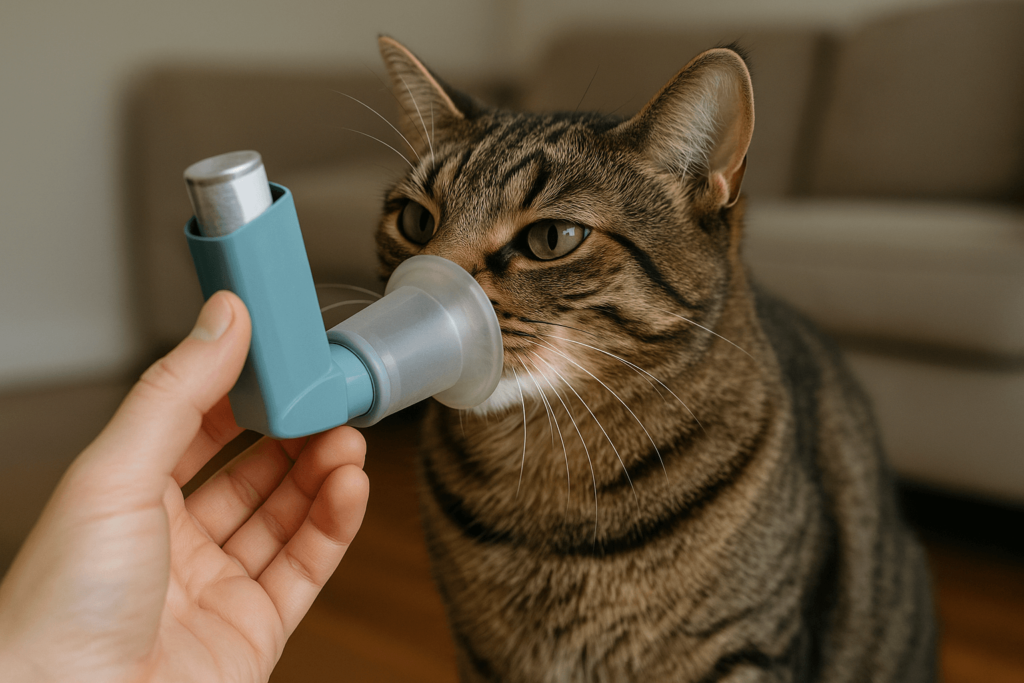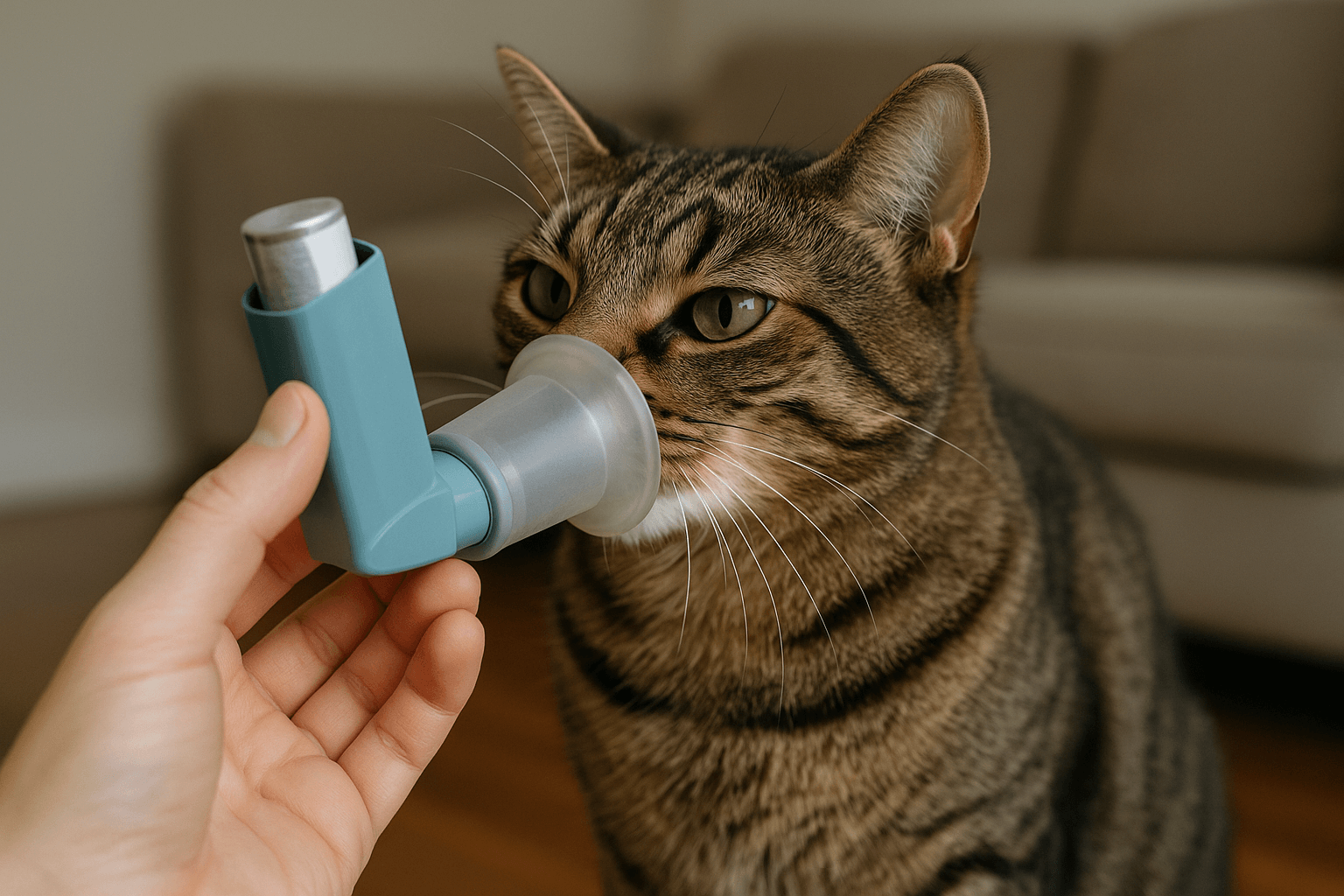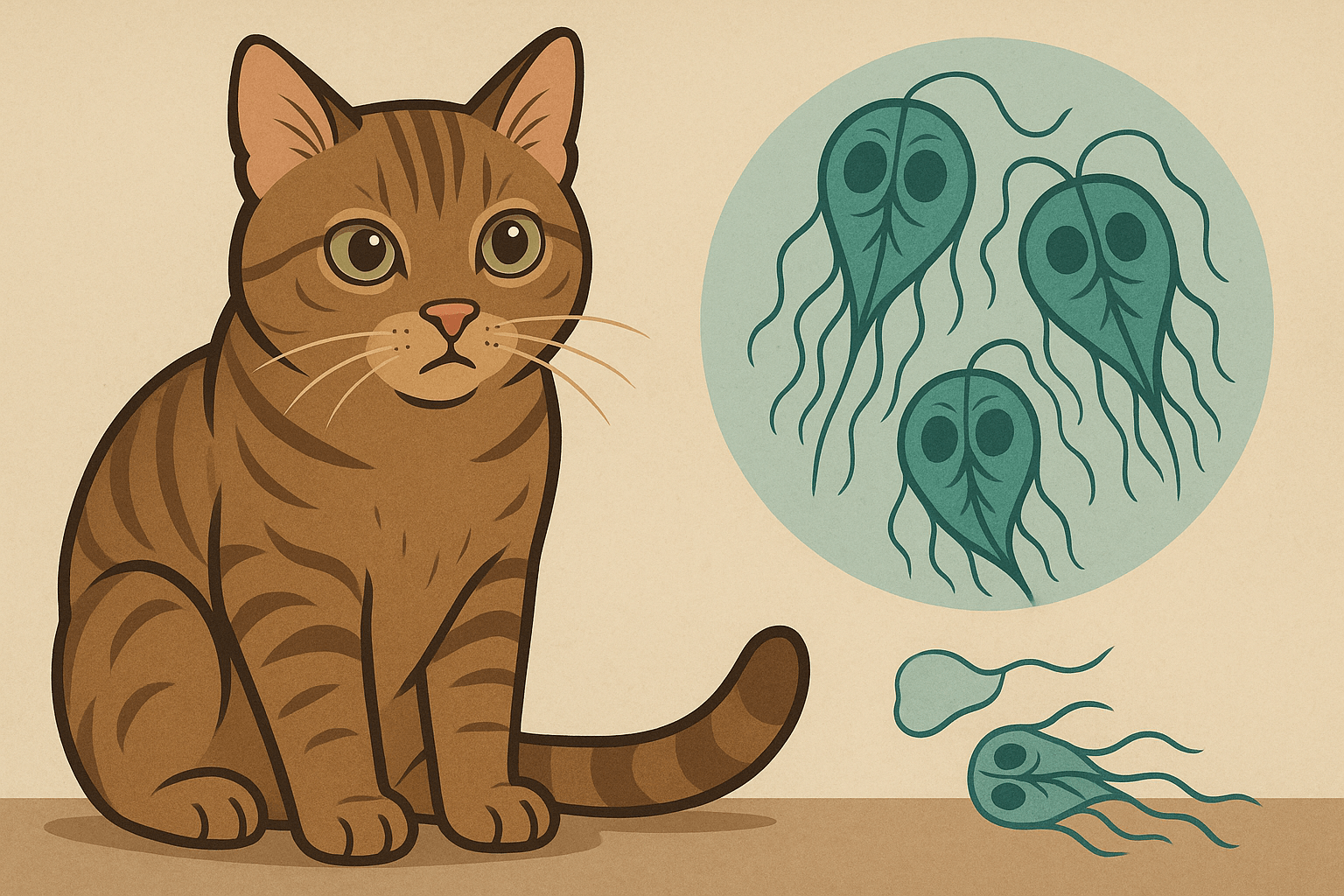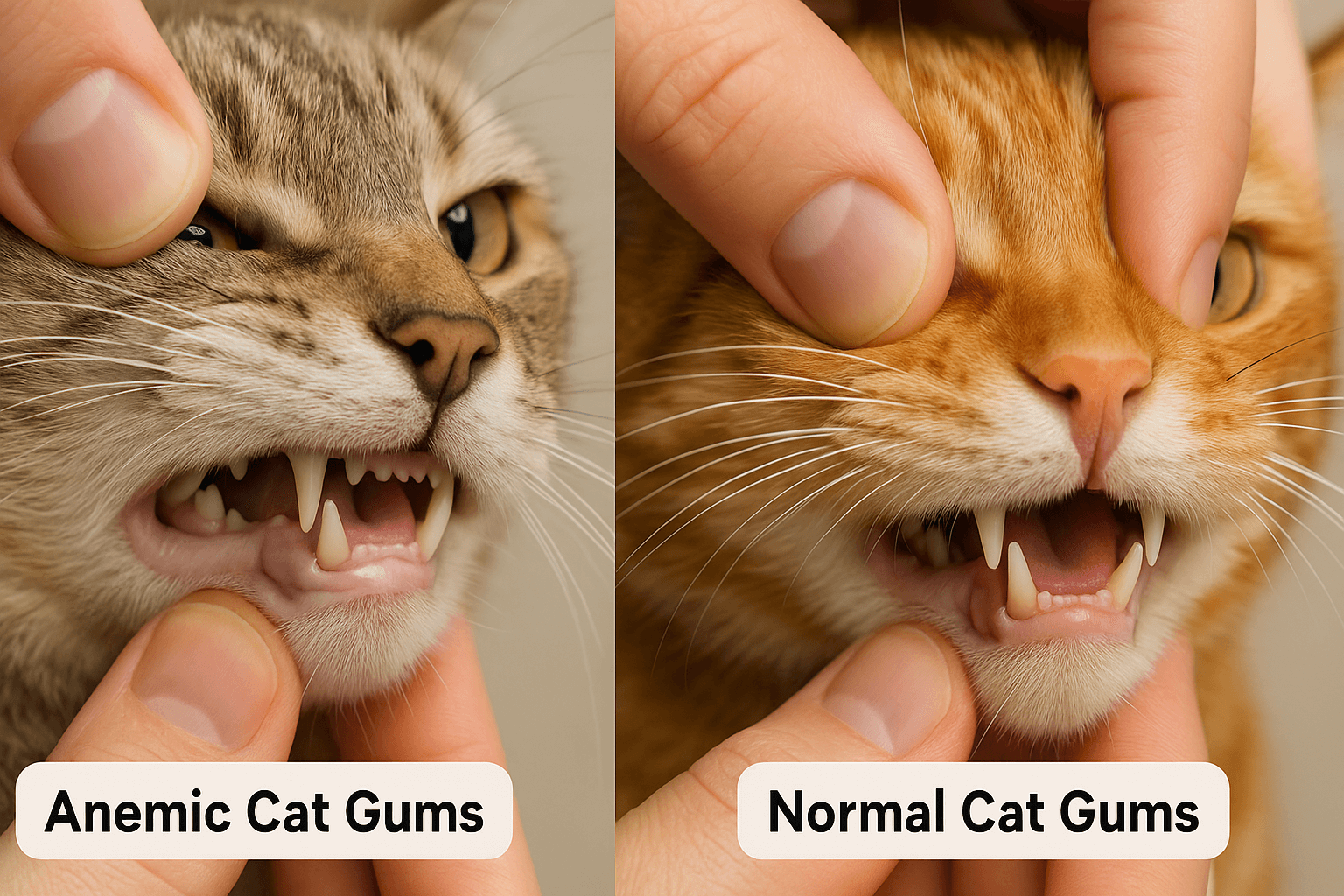Understanding Cat Asthma Treatment
Cat asthma, also known as feline asthma or allergic bronchitis, is a chronic respiratory condition that affects many cats worldwide. Similar to human asthma, it causes inflammation and constriction of the airways, leading to symptoms like coughing, wheezing, and labored breathing. While there is no cure for cat asthma, proper treatment can significantly improve your feline friend’s quality of life. Early diagnosis, consistent care, and a tailored treatment plan are essential for managing this condition effectively. In this blog post, we’ll explore the causes, symptoms, and best practices for treating cat asthma, ensuring your pet stays happy and healthy.
Common Symptoms of Cat Asthma
Recognizing the signs of cat asthma is crucial for early intervention and effective treatment. These symptoms often mimic other respiratory issues, so it’s important to consult your veterinarian for an accurate diagnosis.
Persistent Coughing:
Cats with asthma may exhibit a dry, hacking cough that resembles hairball retching but occurs more frequently.Wheezing Sounds:
Wheezing during inhalation or exhalation is a telltale sign of airway constriction caused by asthma.Labored Breathing:
Look for rapid or shallow breathing, open-mouthed panting, or visible effort when inhaling and exhaling.Lethargy and Weakness:
Difficulty breathing can leave your cat feeling exhausted or unwilling to engage in normal activities.Blue Gums or Tongue:
In severe cases, oxygen deprivation may cause bluish discoloration of the gums or tongue, indicating an emergency.
If you notice any of these symptoms, seek veterinary care promptly. Early detection and treatment can prevent complications and improve your cat’s long-term prognosis.

Treatment Options for Cat Asthma
Managing cat asthma involves a combination of medications, lifestyle adjustments, and environmental controls. Here are some common treatment approaches recommended by veterinarians.
Bronchodilators:
These medications relax the muscles around the airways, helping to relieve acute episodes of breathing difficulty.Corticosteroids:
Anti-inflammatory drugs like prednisone reduce swelling in the airways, making breathing easier for your cat.Inhaled Medications:
Specialized feline inhalers deliver medication directly to the lungs, minimizing side effects compared to oral treatments.Environmental Modifications:
Reducing exposure to allergens such as dust, smoke, and strong scents can help prevent asthma flare-ups.Weight Management:
Maintaining a healthy weight reduces stress on your cat’s respiratory system, improving overall lung function.
With a comprehensive treatment plan, most cats with asthma can lead comfortable, active lives despite their condition.
Check this guide 👉Does My Cat Have Asthma? Best 7 Expert Tips!
Check this guide 👉Cat Asthma Attack at Night: Best 7 Health Tips!
Check this guide 👉Cat Asthma Life Expectancy: Best 7 Expert Tips!
Preventive Measures for Cat Asthma | Signs Your Cat Needs Immediate Care |
|---|---|
Use air purifiers to remove allergens | Labored breathing or gasping for air |
Avoid smoking near your cat | Blue gums or tongue |
Clean bedding regularly | Collapsing or extreme lethargy |
Minimize exposure to dusty environments | Persistent wheezing or coughing |
Provide stress-free surroundings | Refusal to eat or drink |
How to Administer Inhaled Medications Safely
Using a feline inhaler can seem intimidating at first, but with practice, it becomes a manageable part of your cat’s treatment routine. Follow these steps to ensure safe and effective administration.
Choose the Right Mask Size:
Ensure the spacer mask fits snugly over your cat’s nose and mouth without causing discomfort.Acclimate Your Cat to the Device:
Let your cat sniff and investigate the inhaler before using it. Reward them with treats to create positive associations.Follow Your Vet’s Dosage Instructions:
Administer the prescribed number of puffs, ensuring each puff is spaced out appropriately for optimal absorption.Stay Calm and Patient:
Cats pick up on your energy—if you’re relaxed, they’re more likely to cooperate during the process.Reward Your Cat Afterward:
Offer praise, treats, or playtime to reinforce good behavior and reduce anxiety about future treatments.
Consistent use of inhaled medications can make a significant difference in managing your cat’s asthma symptoms.
Dietary Adjustments to Support Respiratory Health
While diet alone cannot cure cat asthma, certain nutritional changes can complement traditional treatments and promote overall wellness. Consider these dietary tips to support your cat’s respiratory health.
Omega-3 Fatty Acids:
Found in fish oil supplements, omega-3s have anti-inflammatory properties that may help reduce airway swelling.High-Quality Protein Sources:
Choose diets rich in lean proteins to maintain muscle strength and overall vitality.Hydration Through Wet Food:
Feeding wet food increases water intake, which supports respiratory function and thins mucus secretions.Avoid Artificial Additives:
Steer clear of foods with artificial colors, flavors, or preservatives that could trigger allergic reactions.Consult Your Veterinarian:
Work with your vet to select a balanced diet tailored to your cat’s specific needs and health conditions.
By incorporating these dietary adjustments, you can enhance your cat’s resilience and comfort while managing asthma.
Environmental Triggers to Avoid
Reducing exposure to environmental triggers is a cornerstone of managing cat asthma. Identifying and eliminating these irritants can significantly decrease the frequency and severity of asthma attacks.
Tobacco Smoke:
Secondhand smoke is a major trigger for cats with asthma. Keep your home smoke-free to protect their delicate lungs.Strong Cleaning Products:
Harsh chemicals in cleaners can irritate your cat’s airways. Opt for natural, pet-safe alternatives instead.Scented Candles and Air Fresheners:
Artificial fragrances release particles that can exacerbate asthma symptoms. Ventilate rooms thoroughly if used.Dust Mites and Mold:
Regularly clean carpets, upholstery, and bedding to minimize allergens that contribute to respiratory distress.Outdoor Pollutants:
Limit outdoor time during high-pollen seasons or days with poor air quality to avoid triggering flare-ups.
By addressing these environmental factors, you create a safer, healthier space for your asthmatic cat.
Signs That Your Cat’s Asthma Is Improving
Monitoring your cat’s progress is essential to gauge the effectiveness of their treatment plan. Look for these positive indicators that suggest your cat’s asthma is under control.
Reduced Frequency of Coughing Episodes:
Fewer coughing fits indicate that inflammation in the airways is decreasing.Improved Energy Levels:
A more active and playful demeanor reflects better oxygen flow and reduced respiratory strain.Clearer Breathing Sounds:
The absence of wheezing or labored breathing suggests improved lung function.Stable Weight Maintenance:
Healthy weight stabilization shows your cat is eating well and not experiencing prolonged fatigue.Decreased Emergency Visits:
Fewer trips to the vet for acute breathing issues signal successful long-term management.
These signs confirm that your efforts are paying off and your cat is responding positively to treatment.
Coping with Stress During Asthma Flare-Ups
Stress can worsen asthma symptoms in cats, making it vital to create a calming environment during flare-ups. Here are ways to soothe your cat and alleviate their anxiety.
Provide a Quiet Space:
Set up a peaceful area where your cat can retreat and rest away from noise or disturbances.Use Gentle Handling Techniques:
Avoid restraining your cat unnecessarily, as this can increase stress levels during an attack.Offer Familiar Comfort Items:
Place soft blankets or favorite toys nearby to provide reassurance and familiarity.Maintain Routine:
Stick to regular feeding, play, and grooming schedules to give your cat a sense of stability.Practice Deep Breathing Exercises Yourself:
Cats mirror their owner’s emotions—staying calm helps transmit soothing vibes to your pet.
By prioritizing your cat’s emotional well-being, you can reduce stress-related asthma triggers and foster a sense of security.
Frequently Asked Questions About Cat Asthma Treatment
Is cat asthma curable?
No, cat asthma is a chronic condition, but it can be managed effectively with proper treatment and care.
Can I use human inhalers for my cat?
Never use human medications without veterinary guidance—they may harm your cat or worsen their condition.
What triggers cat asthma attacks?
Common triggers include allergens like dust, pollen, smoke, and stress-inducing situations.
How often should I clean my home to reduce allergens?
Regular cleaning, including vacuuming and washing bedding weekly, helps minimize exposure to potential irritants.
Are certain breeds more prone to asthma?
Siamese cats and other Oriental breeds appear to have a higher risk, but any cat can develop asthma.
Empowering Your Cat to Thrive Despite Asthma
Living with cat asthma requires dedication, patience, and a proactive approach to treatment. By understanding the condition, implementing preventive measures, and working closely with your veterinarian, you can ensure your cat enjoys a fulfilling and active life. Remember, every small step—whether it’s administering medication, modifying your home environment, or providing a nutritious diet—contributes to your cat’s well-being. With love and commitment, you can help your feline companion breathe easier and thrive despite their diagnosis.
Giardia in Cats: Best 7 Expert Tips! Discover expert advice on identifying, treating, and preventing giardia in cats to ensure your feline stays happy and healthy.
Cat Hyperventilating: Best 7 Expert Tips! Discover signs, causes, and solutions for cat hyperventilation. Learn how to calm your cat and when to seek veterinary care for their breathing issues.
Anemic Cat Gums vs Normal: Best 7 Expert Tips! Learn to spot signs of anemia in cats, understand gum health, and ensure your feline stays happy and healthy with expert advice.
Himalayan Cat Size: Best 7 Expert Tips! Discover expert advice on Himalayan cat size, growth factors, care tips, and how to ensure your feline stays healthy and happy.





